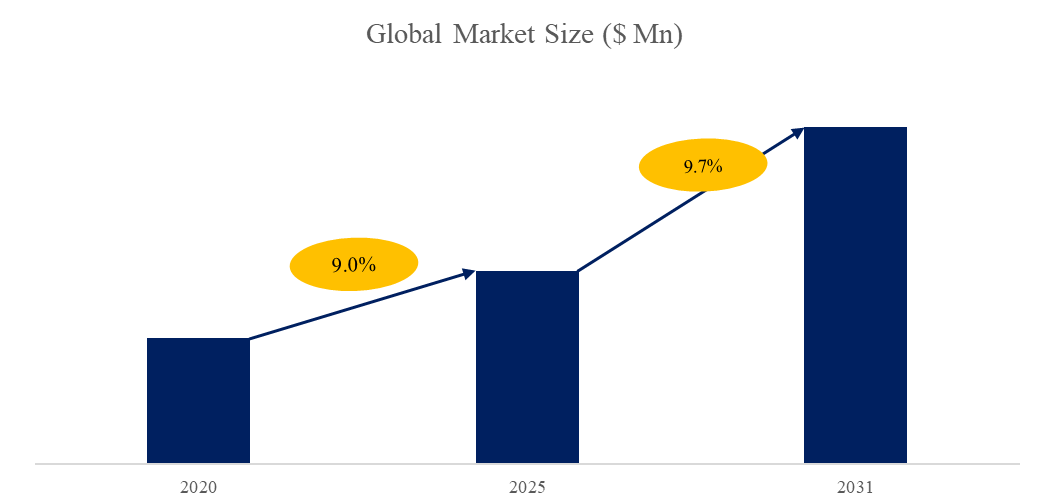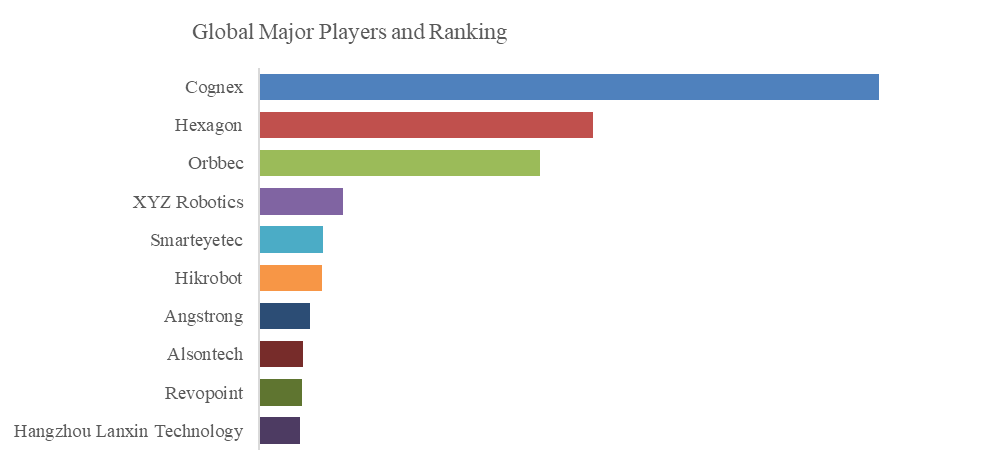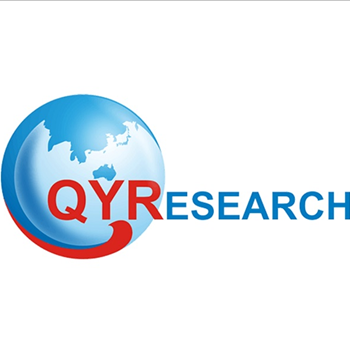Right Now
Binocular Structured Light Camera Market Trends:the market size is projected to grow from USD 310.86 million in 2024 to USD 592.64 million by 2031
A binocular structured light camera is a depth perception device that combines binocular stereo vision and structured light technology. This camera uses two cameras (similar to human eyes) to capture an image of a scene and projects a specific light pattern into the scene through structured light technology. By analyzing the deformation of these light patterns on the surface of an object, the camera is able to calculate the depth information and three-dimensional shape of the object. The advantage of a binocular structured light camera is that it can use structured light to measure depth information in indoor environments. Outdoors or when the lighting conditions are poor, it can switch to using pure binocular vision to improve resistance to environmental interference and reliability. In addition, structured light technology adds texture to the surface of an object, making it possible to use the principle of parallax more accurately when calculating depth.
According to the new market research report "Binocular Structured Light Camera - Global Market Share and Ranking, Overall Sales and Demand Forecast 2025-2031", published by QYResearch, the global Binocular Structured Light Camera market size is projected to grow from USD 310.86 million in 2024 to USD 592.64 million by 2031, at a CAGR of 9.7% during the forecast period.
Figure00001. Global Binocular Structured Light Camera Market Size (US$ Million), 2020-2031

Source: QYResearch, "Binocular Structured Light Camera - Global Market Share and Ranking, Overall Sales and Demand Forecast 2025-2031”
Figure00002. Global Binocular Structured Light Camera Top 10 Players Ranking and Market Share (Ranking is based on the revenue of 2024, continually updated)

Source: QYResearch, "Binocular Structured Light Camera - Global Market Share and Ranking, Overall Sales and Demand Forecast 2025-2031”
According to QYResearch Top Players Research Center, the global key manufacturers of Binocular Structured Light Camera include Cognex, Hexagon, Orbbec, XYZ Robotics, Smarteyetec, Hikrobot, Angstrong, Alsontech, Revopoint, Hangzhou Lanxin Technology, etc. In 2024, the global top 10 players had a share approximately 66.0% in terms of revenue.
In terms of product type, Industrial Grade is the largest segment, hold a share of 86%,
In terms of product application, Industrial is the largest application, hold a share of 37.8%.
Main driving factors:
1. Hardware performance improvement: higher resolution, faster sensors and processing chips improve ranging accuracy and response speed.
2. Algorithm and software optimization: innovations in deep learning and image processing algorithms significantly improve the accuracy and stability of depth maps.
3. Cost reduction: mature manufacturing processes and large-scale production reduce costs, making products easier to promote.
4. Growth in demand in multiple industries: the demand for high-precision 3D perception in industries such as autonomous driving, AR/VR, security, and industrial inspection continues to expand.
Main risk factors:
1. Technical risk: 3D structured light technology needs to continue to promote system-level optimization and iteration to meet the ever-increasing performance requirements in various application scenarios. As the market matures, some new competitors will emerge. If the company's structured light technology cannot continue to maintain its iterative innovation capabilities, it will be at risk of being overtaken by competitors. In addition, if there are disruptive technological breakthroughs in binocular, ToF and other 3D visual perception technologies, and all performances are better than structured light technology, structured light technology is also at risk of being disrupted or replaced by other technologies, which may have a significant adverse impact on the development of the company.
2. Business risks: The growth of the company's sales revenue mainly depends on the promotion and development of downstream application scenarios of 3D visual perception and whether the products and technologies can maintain continuous industry leadership. If the promotion and development of downstream application scenarios of 3D visual perception is slow, resulting in the inability to maintain growth in downstream demand for products, or the company's R&D progress is slower than expected, resulting in the loss of technological leadership, sales revenue will not be able to maintain growth, which will have a significant adverse impact on the company's profitability.
3. Supply chain risks: The company purchases key components such as laser emitters and photosensitive chips from outside, and processes some production links through commissioned processing, etc., which may cause supply chain risks brought about by the outsourcing of key components and commissioned processing.
4. Legal risks: The industry in which 3D structured light cameras are located is a technology-intensive industry. In the process of technology research and development and product development, many intellectual property rights such as patents and software copyrights are involved. Enterprises should declare and protect their own intellectual property rights and avoid infringing on the intellectual property rights of others. In addition, if the confidentiality system is not properly implemented, there is a risk that the leakage of core technology will have a significant adverse impact on the interests of the enterprise.
Industry development trends:
1. High precision and high speed: With the optimization of hardware and algorithms, the ranging accuracy continues to improve, the response speed is faster, and the real-time application needs are met.
2. Integration and miniaturization: The smaller the size and the higher the integration, the more suitable it is for integration into smartphones, AR/VR devices and various portable devices.
3. Cost continues to decline: Large-scale production and mature technology reduce manufacturing costs and promote popularization and application.
4. Multimodal fusion: Combine multiple sensing technologies such as LiDAR, ToF, and deep learning to enhance the accuracy of environmental perception.
About QYResearch
QYResearch founded in California, USA in 2007.It is a leading global market research and consulting company. With over 17 years’ experience and professional research team in various cities over the world QY Research focuses on management consulting, database and seminar services, IPO consulting (data is widely cited in prospectuses, annual reports and presentations), industry chain research and customized research to help our clients in providing non-linear revenue model and make them successful. We are globally recognized for our expansive portfolio of services, good corporate citizenship, and our strong commitment to sustainability. Up to now, we have cooperated with more than 60,000 clients across five continents. Let’s work closely with you and build a bold and better future.
QYResearch is a world-renowned large-scale consulting company. The industry covers various high-tech industry chain market segments, spanning the semiconductor industry chain (semiconductor equipment and parts, semiconductor materials, ICs, Foundry, packaging and testing, discrete devices, sensors, optoelectronic devices), photovoltaic industry chain (equipment, cells, modules, auxiliary material brackets, inverters, power station terminals), new energy automobile industry chain (batteries and materials, auto parts, batteries, motors, electronic control, automotive semiconductors, etc.), communication industry chain (communication system equipment, terminal equipment, electronic components, RF front-end, optical modules, 4G/5G/6G, broadband, IoT, digital economy, AI), advanced materials industry Chain (metal materials, polymer materials, ceramic materials, nano materials, etc.), machinery manufacturing industry chain (CNC machine tools, construction machinery, electrical machinery, 3C automation, industrial robots, lasers, industrial control, drones), food, beverages and pharmaceuticals, medical equipment, agriculture, etc.
Contact Us:
If you have any queries regarding this report or if you would like further information, please contact us:
QY Research Inc.
Add: 17890 Castleton Street Suite 369 City of Industry CA 91748 United States
E-mail: global@qyresearch.com
Tel: 001-626-842-1666(US) 0086-133 1872 9947(CN)
More Posts



















Report This Post
Please complete the following requested information to flag this post and report abuse, or offensive content. Your report will be reviewed within 24 hours. We will take appropriate action as described in Findit terms of use.


